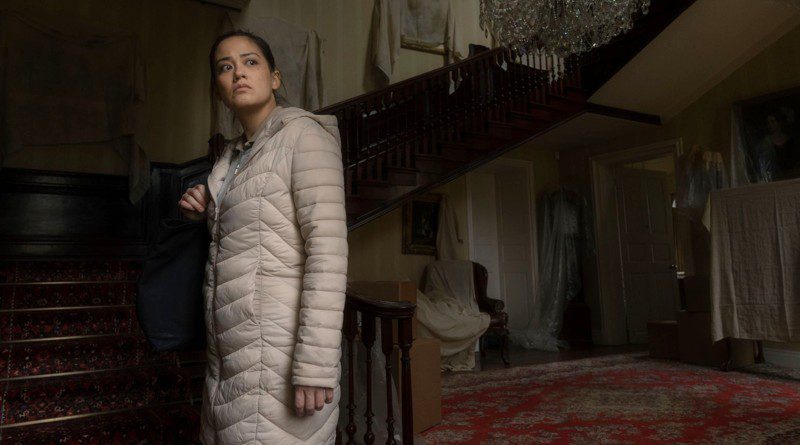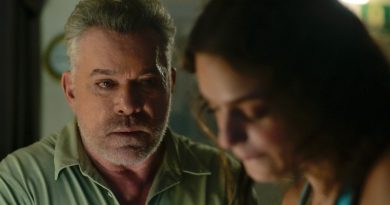Raging Grace (2023) Review
The first thing that caught my attention while watching Raging Grace is the old-school 4:3 aspect ratio. Movies like The Grand Budapest Hotel and The Lighthouse utilise this aspect ratio effectively. British-Filipino filmmaker Paris Zarcilla, making his feature-length directorial debut and cinematographer Joel Honeywell chose such a boxy aspect ratio to frame a story about Joy (Max Eigenmann), who is an undocumented Filipina immigrant living in the UK.
We learn that she and her young daughter Grace (Jaeden Boadilla) have to make do with whatever form of shelter as long as they have a roof over their heads. She barely makes ends meet working as a housekeeper and often takes advantage of her employers’ houses to live temporarily while they are away on a trip. She doesn’t have a visa and she’s been trying her best to save enough money to buy one from a black market.
Then comes an opportunity that she can’t refuse: A well-paying job as a caregiver to take care of a bed-ridden elderly man, Mr Garrett (David Hayman) and responsible for the housekeeping working under the man’s niece, Katherine (Leanne Best). Joy soon moves into the country house and because her employer is unaware of Grace’s existence, she has no choice but to smuggle her daughter to live together as discreetly as possible. That means Grace has to keep a low profile and not attract any attention to raise suspicion.
Throughout the movie, we see Joy’s hardship from scraping by doing meagre housekeeping jobs to struggling to provide a comfortable life for her daughter, Grace. Freedom is certainly out of the question, given her status and the 4:3 aspect ratio perfectly mirrors her life trapped in a difficult situation. Desperation kicks in, choices are scarce and even though the lucrative job seems to be solving her financial woes, she has to put up with her fussy and demanding employer, Katherine. But the worst is yet to come after Joy learns about the family’s dark secrets.
The confined framing of its aspect ratio integrates well with Jon Clarke’s immersive soundscape combining traditional Filipino instruments, namely Kulintang and Tinikling to evoke ominous dread and tension. But Zarcilla’s overreliance on jump scares gives me mixed feelings — some are effective like the one in the earlier part revolving around a moment of false alarm while some others are rather irritating.
Raging Grace may have been marketed as a horror film and the predominantly mansion setting suggests all things gothic and supernatural. However, Zarcilla isn’t interested in making a straightforward horror but rather uses the familiar genre conventions to inject themes of post-colonialism, class divide and racial prejudice. The social-realist narrative approach somehow reminds me of Jordan Peele’s Get Out, even though the latter is more of a dark horror satire.
Zarcilla brings out the best in his cast including Max Eigenmann, who delivers a sympathetic lead performance as Joy. Newcomer Jaeden Boadilla proves to be a great find as the mischievous Grace while Leanne Best excels in her solid supporting turn as the imperious employer, Katherine. David Hayman’s Mr Garrett may have been mostly confined to the bed looking comatose but Zarcilla has something more in store. Let’s just say Hayman’s character isn’t here just to phoning in a performance.
The climactic payoff after a deliberately paced build-up in the first and second acts, however, feels less impactful. It looks as if Zarcilla is losing steam to end his movie in a way I’m expecting something more sinister. A few shortcomings aside, Raging Grace remains a compelling debut feature for Paris Zarcilla worth checking out. Interestingly, Zarcilla reportedly wanted to turn this into a trilogy and just like his first movie, his next ones would continue to focus on the diaspora life.





